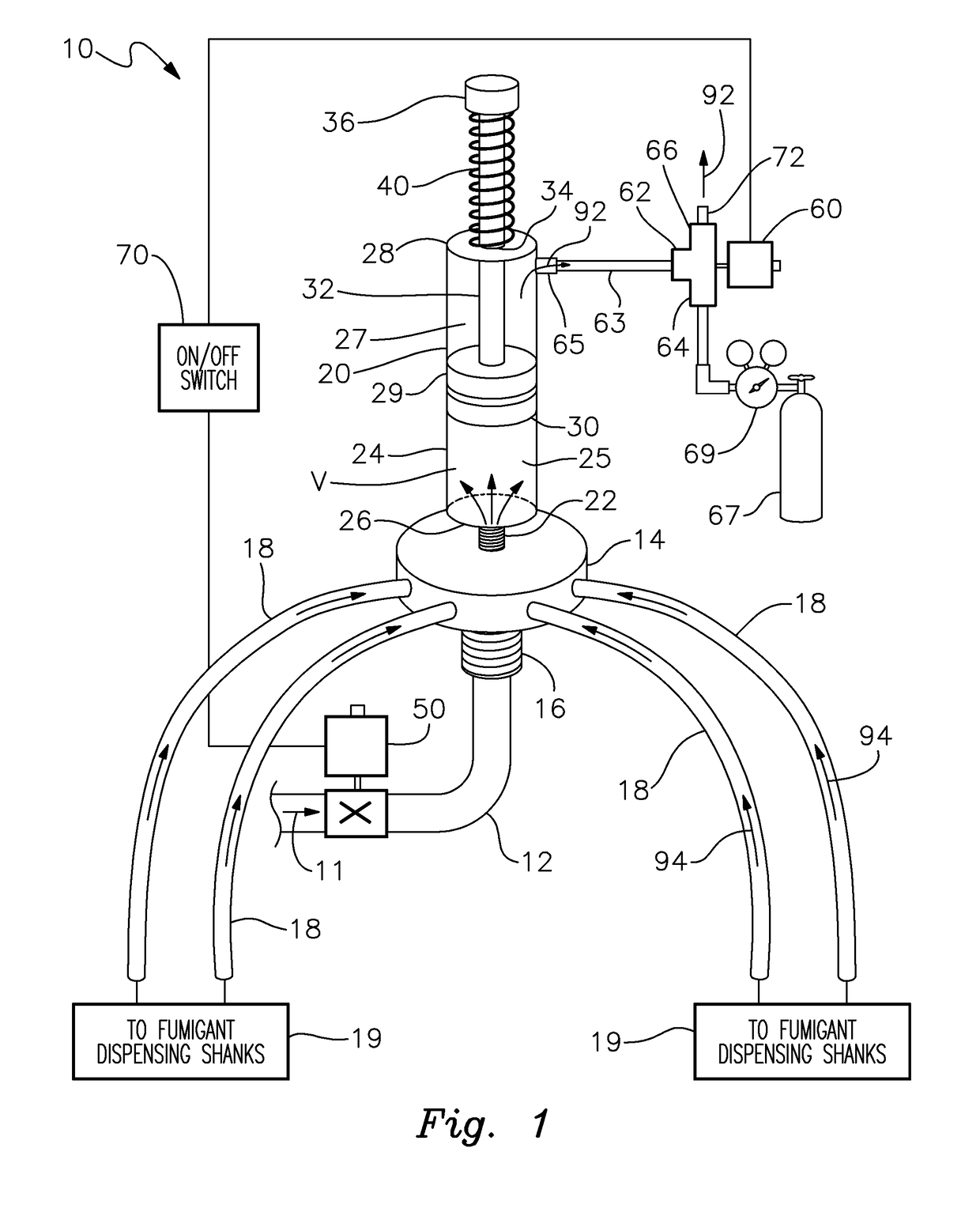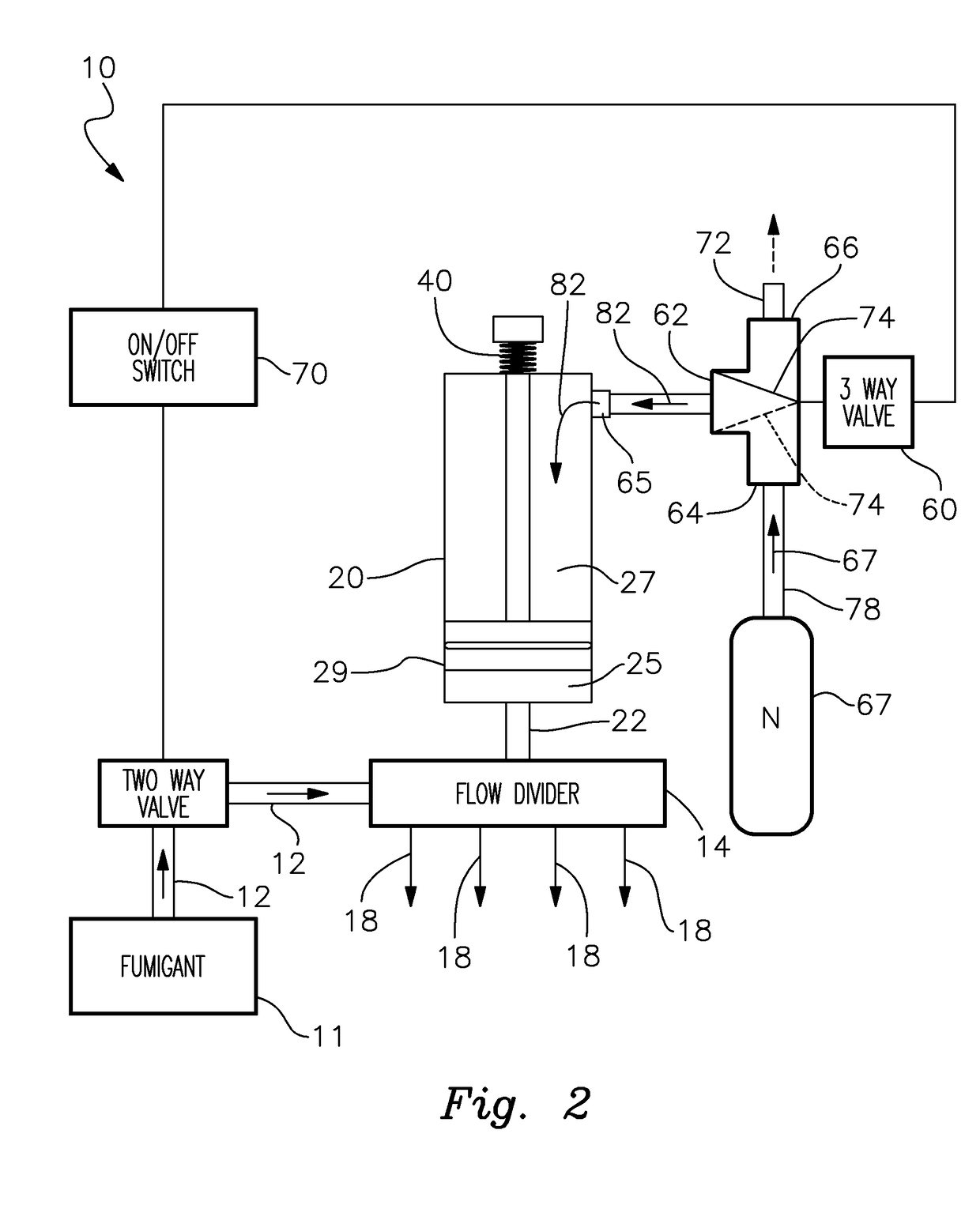Vacuum Shut Off Valve Mechanism For A Soil Fumigant Applicator Rig
a technology of shut-off valve and soil fumigant, which is applied in the direction of insect catchers and killers, coatings, animal husbandry, etc., can solve the problems of excessive product remaining in the section of tubing mounted to the shank that tends to drip or leak from the tip of the shank and onto the ground, and achieves the effect of effectively controlling the undesirable dripping
- Summary
- Abstract
- Description
- Claims
- Application Information
AI Technical Summary
Benefits of technology
Problems solved by technology
Method used
Image
Examples
Embodiment Construction
[0024]There is shown in FIGS. 1 and 2 a vacuum shut off valve mechanism 10 for use on a soil fumigant applicator rig. Although mechanism 10 is especially suited for functioning effectively and achieving improved results in conjunction with a soil fumigation rig, the mechanism may also be used for alternative liquid shut off valve applications within the scope of this invention. In addition, mechanism 10 can be used effectively with virtually all types of soil fumigants with the exception of methyl bromide. The mechanism also may be employed with fumigation rigs and fumigant applicators of all types and in virtually any planting or crop application.
[0025]The fumigation applicator rig, which is a standard machine and not shown, carries a supply of fumigant 11 that is delivered through a fumigant supply conduit 12 to a flow divider 14. In particular, an outlet end of supply conduit 12 is connected via an inlet fitting 16 to flow divider 14. The flow divider is a conventional item that ...
PUM
 Login to View More
Login to View More Abstract
Description
Claims
Application Information
 Login to View More
Login to View More - R&D
- Intellectual Property
- Life Sciences
- Materials
- Tech Scout
- Unparalleled Data Quality
- Higher Quality Content
- 60% Fewer Hallucinations
Browse by: Latest US Patents, China's latest patents, Technical Efficacy Thesaurus, Application Domain, Technology Topic, Popular Technical Reports.
© 2025 PatSnap. All rights reserved.Legal|Privacy policy|Modern Slavery Act Transparency Statement|Sitemap|About US| Contact US: help@patsnap.com



